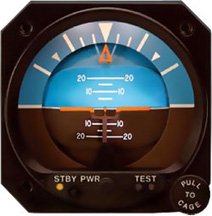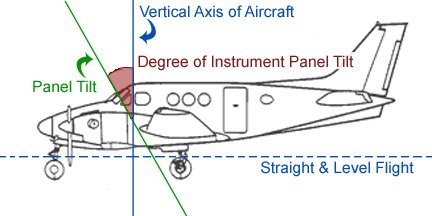 will be closed December 24th - January 2nd for the Holidays.
will be closed December 24th - January 2nd for the Holidays.
Regular business hours will resume on Monday, January 5th.
AOG Services are available.
| Part #: | 102-0057-01 |
|---|---|
| Model: | RCA26BK-6 |
| Desc: | Electric Attitude Indicator |
| OEM: | Kelly Mfg. |
| NSN: | |
|---|---|
| Sched-B: | 9014107040 |
| ECCN: |
 Select part number above to view pricing and availability.
Select part number above to view pricing and availability.
| Price | Condition | Availability | Stock Info | |
|---|---|---|---|---|
| Price | Cond. | Avail. | Stock Info | |
| REQUEST | NEW OUTRIGHT | REQUEST LEAD TIME |
|
| Price | Condition | Availability | Stock Info | |
|---|---|---|---|---|
| Price | Cond. | Avail. | Stock Info | |
| $2,295.00 | NEW OUTRIGHT | 1 IN STOCK |
Serial #: 125H035 [Details]
|
|
| $1,750.00 | OH OUTRIGHT | REQUEST LEAD TIME |
|

FEATURES
| Bank Range: | 360 deg. (unlimited) | Pitch Range: | +-85 deg. min. |
| Pitch Trim Range: | +-7 deg. min. | Altitude: | -1000 to +40000 ft. |
| Accuracy: | (settling error) 1 deg. max. in roll and pitch after +-7.5 deg. of scorsby motion for 30 minutes | Accuracy: | (verticality error) 1 deg. max. |
| Power Consumption: | 17VA max. lighting 3VA max. | Run-up Time: | 3 minutes max. after application of power |
| Weight: | 2.7 lbs. | TSO: | C4c and AS396 |
| Part Number | Horizon Gyro Description: |
|---|---|
| 102-0057-01 | Details as above, With Inclinometer |
| 102-0057-02 | Details as above, Without Inclinometer |
| Price | Condition | Status |
|---|---|---|
| $2,295.00 | NEW OUTRIGHT | 1 IN STOCK |
| $1,750.00 | OH OUTRIGHT | REQUEST LEAD TIME |
| Price | Condition | Status |
|---|---|---|
| REQUEST | NEW OUTRIGHT | REQUEST LEAD TIME |
Click on a question below to see the answer. If you have a question about this model that is not answered below, please contact questions@seaerospace.com
In relation to NE (New) parts, many OEMs change their prices and availability without any notice to dealers or the industry. Therefore, through the REQUEST or RFQ indication, we ask that customers contact us for the most accurate price and availability.
In relation to SV & OH parts, the used parts aftermarket in the aviation industry is not an infinite supply. It is a dynamic, constantly changing market that is significantly affected by and susceptible to highs and lows in supply and demand. Therefore, although we attempt to, at times, we are unable to predict the exact moment when an item may be available. Once again, through the REQUEST or RFQ indication on our website, we ask that customers contact us for the most current and accurate price and availability.

|
Note: There is an extra charge to reset the tilt angle after purchase. |

|

|

